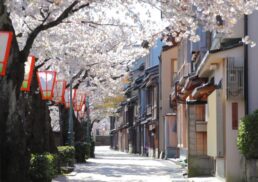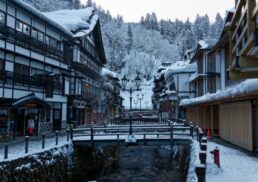Shimane Prefecture is known for its historic shrines, stunning nature, and cultural festivals. Discover what makes Shimane special and plan your visit to top attractions like Izumo Taisha and the Oki Islands.
Table of Contents
Key Takeaways
Shimane Prefecture offers a diverse range of attractions, from natural landscapes like Lake Shinji and the Oki Islands to significant cultural sites such as the Izumo Taisha Grand Shrine and Matsue Castle.
The region boasts unique traditional festivals, including Night Kagura and Tsuwano’s Obon Dance, which showcase Shimane’s rich cultural heritage and spiritual significance.
Shimane is recognized for its culinary delights, particularly Izumo Soba and Okigyu Beef, as well as its wellness offerings like the historic Yunotsu Hot Spring and traditional ryokan experiences.
Exploring Shimane Prefecture
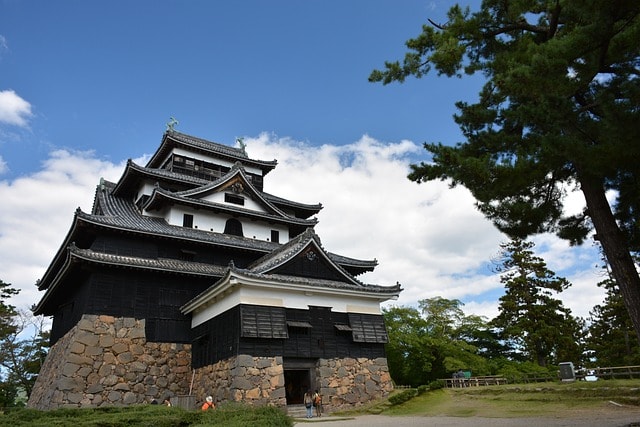
Shimane Prefecture, located in the northern part of western shimane, is a captivating region that stretches along the San-in coastline, bordering the Sea of Japan. This prefecture boasts a diverse landscape, from majestic mountains to scenic beaches, offering a perfect blend of natural beauty and cultural richness. The capital city, Matsue, serves as the gateway to exploring Shimane’s wonders. Accessible by limited express trains, highway buses, cars, and flights to Izumo Airport and Hagi-Iwami Airport, reaching Shimane is convenient for travelers from various parts of Japan and beyond.
Nearly one-third of Shimane’s population resides in the Izumo-Matsue area, with over two-thirds living along the coastline. This concentration highlights the region’s connection to the sea and its cultural significance. The Oki Islands, a group of about 180 islands off Shimane’s coast, add to the region’s charm with their unique ecosystems and geological formations.
Journeying through Shimane reveals captivating landscapes, from the tranquil waters of Lake Shinji to the rugged beauty of the Shimane Peninsula. Discover Shimane, where every destination offers a glimpse into the prefecture’s rich heritage and natural splendor.
Historical and Cultural Sites
Shimane Prefecture is a treasure trove of historical and cultural sites that offer a deep dive into Japan’s rich heritage. Among its many attractions, three stand out for their historical significance and cultural impact: the Izumo Taisha Grand Shrine, Matsue Castle, and the Iwami Ginzan Silver Mine.
These destinations attract tourists worldwide and offer a window into Japan’s past, traditions, and architectural marvels.
Izumo Taisha Grand Shrine
Izumo Taisha Grand Shrine, located in eastern Shimane, is one of Japan’s most significant Shinto shrines. It plays a crucial role in Japanese marital customs and attracts visitors for its unique worship practices, such as clapping four times instead of the usual two.
Deeply rooted in Japanese mythology, Izumo Taisha Grand Shrine offers a profound spiritual and cultural experience.
Matsue Castle
Matsue Castle, constructed in 1611, is a vital piece of Japan’s historical architecture and one of the few remaining original wooden castles. This castle is a symbol of Japan’s feudal history and a cherished cultural landmark.
The castle’s wooden structure and design elements reflect its era, making it a fascinating destination for architecture and history enthusiasts.
Learn more, visit Matsue Castle (National Treasure).
Iwami Ginzan Silver Mine
The Iwami Ginzan Silver Mine is the largest silver mine in Japanese history. It is also recognized as a World Heritage Site. Visitors can explore the historical mining town and take guided tours of the tunnels, providing a glimpse into the Edo Period when Yunotsu was a key port for silver shipments.
This site underscores Shimane’s historical importance and contribution to the world’s silver production.
Natural Beauty and Outdoor Activities
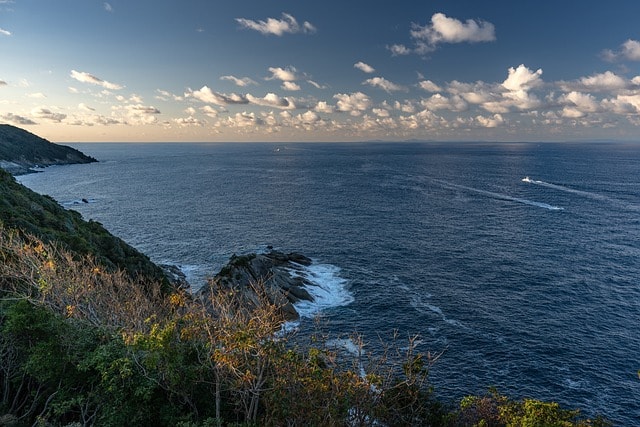
Shimane Prefecture is renowned for its stunning natural landscapes and diverse outdoor activities. Nature enthusiasts will find plenty to explore, from the rugged beauty of the Oki Islands to the tranquil waters of Lake Shinji and the dramatic formations of Tachikue Gorge.
These attractions offer activities such as hiking, kayaking, bird watching, and sunset cruises, making Shimane a hidden gem for outdoor adventurers.
Oki Islands
The Oki Islands, comprising about 180 large and small islands, are a paradise for outdoor enthusiasts. Visitors can engage in activities such as snorkeling, scuba diving, fishing, and kayaking, with the added thrill of exploring hidden coastal caves via sea kayaking.
The unique geological formations and marine biodiversity of the islands make them an ideal eco-tourism destination.
Lake Shinji
Lake Shinji is renowned for its breathtaking sunsets, often regarded among Japan’s most picturesque. The lake offers various recreational activities, including boating and bird watching, particularly for migratory species.
Situated by the lake, the Shimane Art Museum emphasizes harmony with water, adding a cultural dimension to your visit.
Tachikue Gorge
Tachikue Gorge is noted for its unique geological formations, including limestone cliffs and deep ravines. The gorge features several scenic hiking trails that highlight its natural beauty and offer breathtaking views.
Tachikue Gorge offers nature enthusiasts excellent opportunities for outdoor exploration and adventure.
Traditional Festivals and Performances
Shimane’s rich cultural heritage is vividly displayed through its traditional festivals and performances. The region is recognized as “The land of go-en” due to its cultural significance in Japanese spirituality. Notable events like Night Kagura performances and Tsuwano’s Obon Dance attract tourists and provide insight into local traditions and folklore.
Night Kagura
Night Kagura is a traditional dance theater for the gods, rooted in the rituals of Shimane. These performances take place from early August to late September, offering a mesmerizing cultural experience in the illuminated Inari Shrine.
These dances offer a window into Shimane’s spiritual and artistic heritage.
Tsuwano’s Obon Dance
Tsuwano’s Obon Dance is a lively community event celebrated annually on August 15, honoring ancestral spirits with local songs and dances. Participants in traditional yukata enhance the festival’s vibrant atmosphere.
The dance, characterized by a slow pace and a sequence of 21 steps, has been a part of Tsuwano’s cultural fabric for over 400 years.
Culinary Delights of Shimane
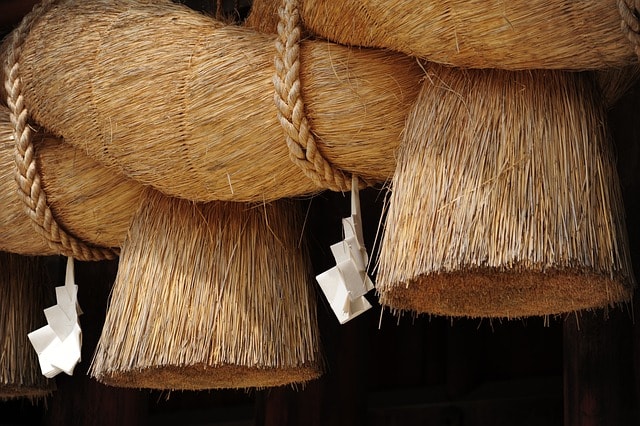
Shimane Prefecture offers a gastronomic journey that highlights its local specialties. From the rich flavors of Izumo Soba to the marbled excellence of Okigyu Beef, Shimane’s culinary delights promise to tantalize your taste buds and offer an authentic taste of the region’s cuisine.
Izumo Soba
Izumo Soba is distinguished by its rich flavor and unique preparation method, making it a beloved dish in Shimane Prefecture. Izumo Soba is distinguished by its darker color and chewy texture, often made with buckwheat flour.
Traditionally served in a three-tiered lacquerware called Warigo, Izumo Soba allows diners to enjoy various toppings and sauces.
Okigyu Beef
Okigyu Beef is renowned for its exceptional marbling and flavor, making it a sought-after delicacy in Japanese cuisine. Produced from Japanese black cattle grazing on mineral-rich grasses in Daisen-Oki National Park, Okigyu Beef is often prepared using traditional methods that enhance its natural taste.
Relaxation and Wellness
In Shimane, relaxation and wellness are integral to the travel experience. The region’s hot springs and traditional ryokan inns offer visitors a chance to unwind and rejuvenate amidst serene surroundings.
A stay at a ryokan, combined with soaking in mineral-rich hot springs, provides a deeply restorative experience.
Yunotsu Hot Spring
Yunotsu Hot Spring, one of Japan’s oldest hot springs, has a history dating back over 1,300 years. Yunotsu Onsen, known for its mineral-rich waters, is part of a UNESCO World Heritage Site and is believed to promote healing for various ailments.
This historic hot spring offers a blend of relaxation and cultural immersion.
Ryokan Experiences
Staying in ryokan inns in Shimane provides guests with authentic Japanese hospitality, including traditional meals and the chance to experience local customs. These inns provide personalized service, cultural immersion, and a unique experience of traditional Japanese lifestyle, featuring tatami flooring and futon bedding.
Getting Around Shimane
Traveling around Shimane Prefecture is convenient and accessible through various transportation options. Whether arriving by limited express trains, highway buses, personal car, or flights to Izumo Airport, travelers find Shimane easy to access.
These transportation options simplify exploring the region’s attractions and immersing yourself in its beauty and culture.
Limited Express Trains
The Limited Express YAKUMO operates between Okayama and Izumo City, offering a convenient and comfortable travel option within Shimane. With 15 round trips daily and all seats reserved, this train ensures frequent and reliable service.
Izumo Airport
Izumo Airport is a key gateway to Shimane, serving both domestic and international flights. Located near the Izumo Plain and the famous Izumo Taisha Grand Shrine, the airport enhances connectivity to this historically rich area.
Whether flying from Tokyo or other parts of Japan, Izumo Airport provides easy access to the region’s attractions, including the Oki Islands and the Iwami Ginzan Silver Mine.
Summary
In summary, Shimane Prefecture is a destination that offers a unique blend of historical, cultural, and natural attractions. From the spiritual significance of the Izumo Taisha Grand Shrine and the historical architecture of Matsue Castle to the natural beauty of the Oki Islands and Lake Shinji, Shimane is a treasure trove of experiences waiting to be discovered. With its rich cultural heritage, traditional festivals, culinary delights, and wellness options, Shimane promises an unforgettable journey. Discover Shimane and let its charms leave an indelible mark on your heart.
Frequently Asked Questions
How do I get to Shimane Prefecture?
To reach Shimane Prefecture, you can use limited express trains like the YAKUMO, highway buses, or drive there, and you can also fly into Izumo Airport or Hagi-Iwami Airport for added convenience.
What are the must-visit historical sites in Shimane?
The must-visit historical sites in Shimane are the Izumo Taisha Grand Shrine, Matsue Castle, and the Iwami Ginzan Silver Mine, each providing insight into Japan’s rich cultural heritage. Exploring these sites promises a deep connection to the region’s history.
What outdoor activities can I enjoy in Shimane?
You can enjoy snorkeling, scuba diving, fishing, and kayaking in the Oki Islands, as well as boating and bird watching at Lake Shinji and hiking in Tachikue Gorge while in Shimane.
What are some traditional festivals in Shimane?
Shimane’s traditional festivals, such as the Night Kagura performances and Tsuwano’s Obon Dance, celebrate the region’s rich cultural heritage and folklore. Attending these events provides a genuine experience of local traditions.
What are the culinary specialties of Shimane?
Shimane is best known for its Izumo Soba, featuring a rich flavor and unique texture, and Okigyu Beef, celebrated for its remarkable marbling and taste. Together, these specialties highlight the region’s culinary heritage.





